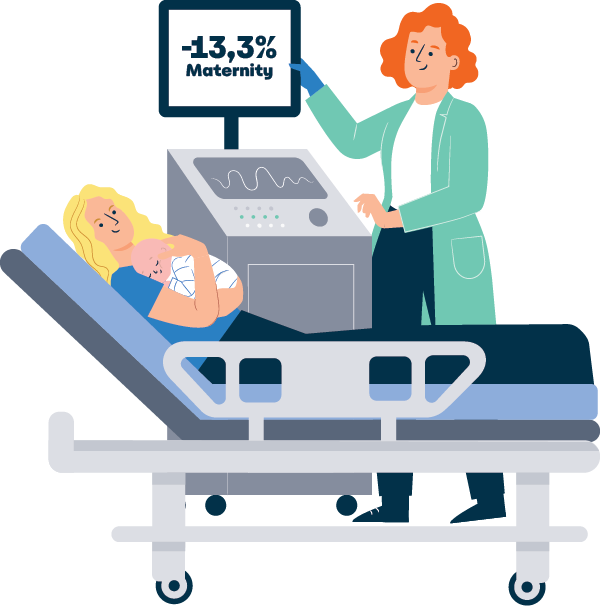Distribution of the budget
The financing of a hospital through the financial resources budget comes from the individual distribution of the overall hospital budget among all hospitals[1]. In January 2023, this overall budget was set at a maximum amount of €9,935,557,653 for the general hospitals. The FRB has increased by 34% over the past five years from 7.4 billion in 2019 to 9.9 billion in 2023.
Evolution BFM general hospitals on Jan.1
The FRB has three main components: a budget for short-term credit charges (Part A2), an operating costs budget (Part B) and a budget for the regularisation of post-financing of the various parts of the FRB (Part C). Hospital financing is mainly based on lump sums, real costs or fee-for-service services.


FRB in the spotlight

Evolution of the number of justified beds
[1]The allocation is made on the basis of the procedures laid down in the Royal Decree of 25 April 2002 on the fixing and settlement of the financial resources budget of hospitals.